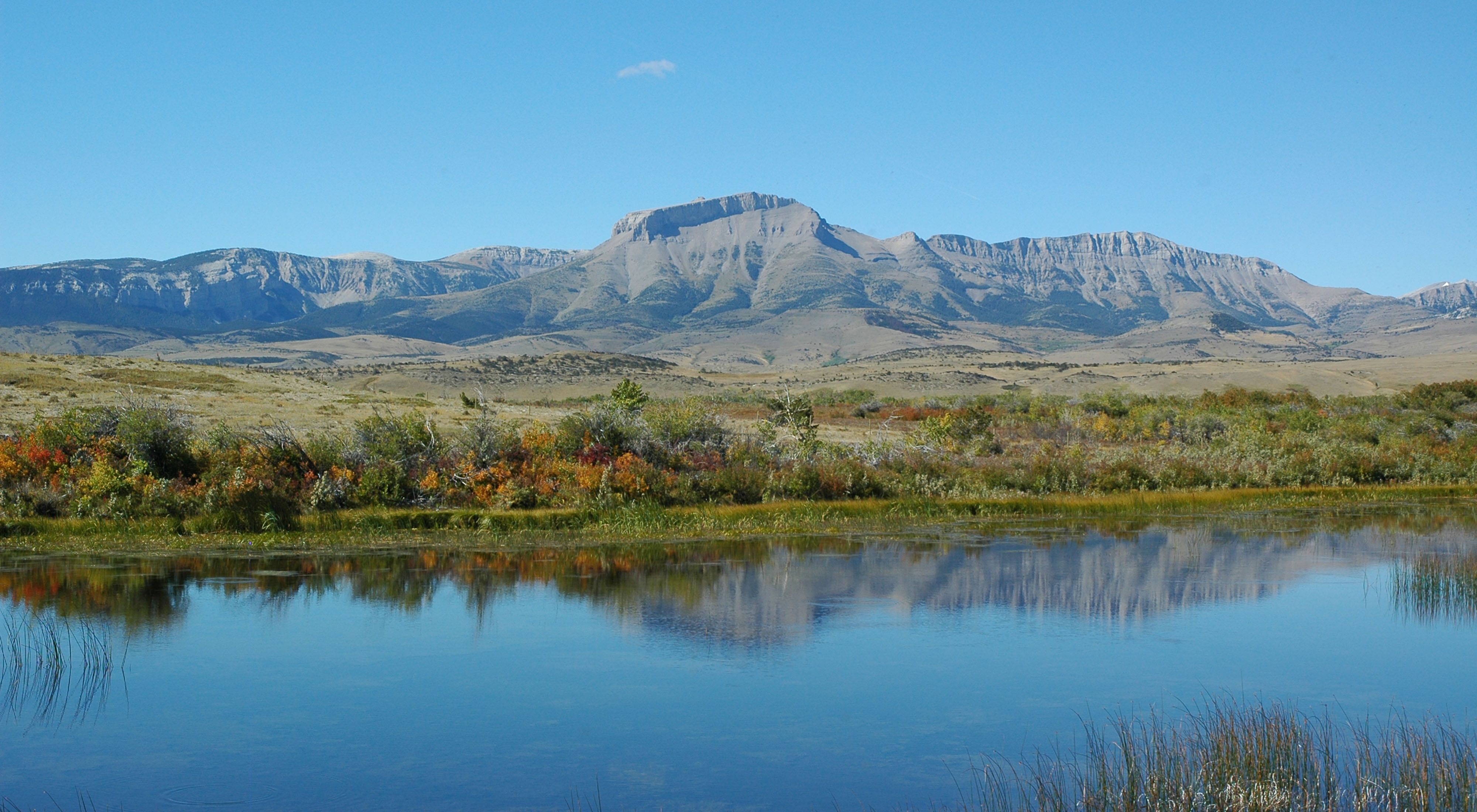Description
The Nature Conservancy continues an ambitious project to protect Montana's Pine Butte Swamp: the largest wetland complex along the Rocky Mountain Front and one of the grizzly bear's last strongholds on the plains. The area is part of the larger Crown of the Continent, a 10-million-acre landscape in the Northern Rockies that includes Glacier National Park and straddles the Montana-Canada border.
Pine Butte lies along the interface between the Great Plains and the Rocky Mountains, where grassland and mountain species intermingle. It is rich in natural diversity and provides a vital migration corridor for wildlife traveling between the mountains and plains.
A Treasury of Habitats
In addition to the surface water flows through the preserve, Pine Butte encompasses an extensive fen peat-land fed by mineral-rich groundwater. What distinguishes it from other fens is its proximity to mountains, foothills and grasslands. A diversity of habitats -- wetlands and dry ground, flat prairie and steep mountains -- meet in a geologic sweep ranging from 4,500 to 8,500 feet in elevation. The result is a remarkably diverse flora supporting a third of the plant species in Montana. Rare wetland species such as yellow lady's slipper, Macoun's gentian, green-keeled cotton grass and Craw's sedge flourish in proximity to common upland prairie plants such as shrubby cinquefoil, rough fescue and Montana's state grass, bluebunch wheatgrass. Limber pine savanna occupies the transition between prairie grasslands and montane forests.
This wealth of vegetation provides habitat for an equally diverse fauna. Each spring grizzly bears descend from their mountain retreats, while snow still blankets the high country, following the watercourses on the Rocky Mountain Front, down to the prairie lowlands, to feed and raise their young. The rich wetland, riparian and grassland environment provides both food and security, so the bears can easily replenish their depleted energy reserves.
Besides the grizzly, dozens of other species of mammals roam the preserve, among them beaver, muskrat, mink, elk, moose, mountain lion, bobcat, lynx, black bear, mule deer and bighorn sheep. The preserve bird list contains about 200 species of birds -- 150 of which breed here. It's a stunning variety, from warblers, waterfowl and waders to soaring raptors. A rare hybrid minnow resides in the wetland waters as well. Sharp-tailed grouse use the wet meadows on the swamp's periphery for their "dancing grounds." In short, Pine Butte Swamp is a wildlife bonanza.
Traces of History
The Nature Conservancy began acquiring land west of Choteau at Pine Butte in 1979, assembling portions of several cattle ranches and a dude ranch to create the 13,000-acre Pine Butte Preserve.
Pine Butte is part of a landscape that the Blackfeet people have called home for countless generations. The Old North Trail, used by Native Americans for thousands of years, cuts through the preserve. Tipi rings and a buffalo jump and associated drive lanes testify to the presence of prehistoric plains dwellers. Scant remains of homestead structures dot the preserve, while ranching activities continue as they have for the past century. The location of a Metis settlement from the late 1800s and early 1900s along the South Fork of the Teton River now serves as our management headquarters. The site also had a long history as the Circle 8 Guest Ranch. For many years after the Conservancy purchased the Circle 8, we maintained it as a recreation destination where people could experience a western style guest ranch while learning about our ever-growing conservation work. We have since evolved toward an integrated facility that provides a base for our science and land management activities along with our work with partners.
What the Conservancy is Doing Here
Over the last four decades, Pine Butte has enabled our conservation work to reach a much bigger scale and encompass the entire Rocky Mountain Front. It continues to be a proving ground of how partnerships, on-the-ground stewardship and science can combine to achieve conservation outcomes. Our on-the-ground work provides shared experience and goals with our community partners—an essential part of our ongoing conservation efforts.
The Conservancy is committed to the long-term protection of the critical and unique habitat found at Pine Butte as well as the larger Rocky Mountain Front landscape. Science is at the foundation of much of our work: long-term biological monitoring, research on invasive species management and cooperative work with wildlife agencies guide our conservation strategies and management. Careful grazing along with fire, wetland and invasive species management are the core of our land management efforts.
We also believe deeply in the power of partnership and work closely with the local community to integrate their values with conservation activities. Cooperative efforts with local agencies and neighboring landowners that support both local livelihoods and the larger ecosystem are crucial for lasting conservation.
In order to preserve undisturbed habitat for grizzlies, the preserve offers very limited access. Besides enabling the bears free range on the preserve, this undisturbed zone keeps them from becoming habituated to people, giving them space to avoid areas where human-bear conflicts rarely end well for the bears.
